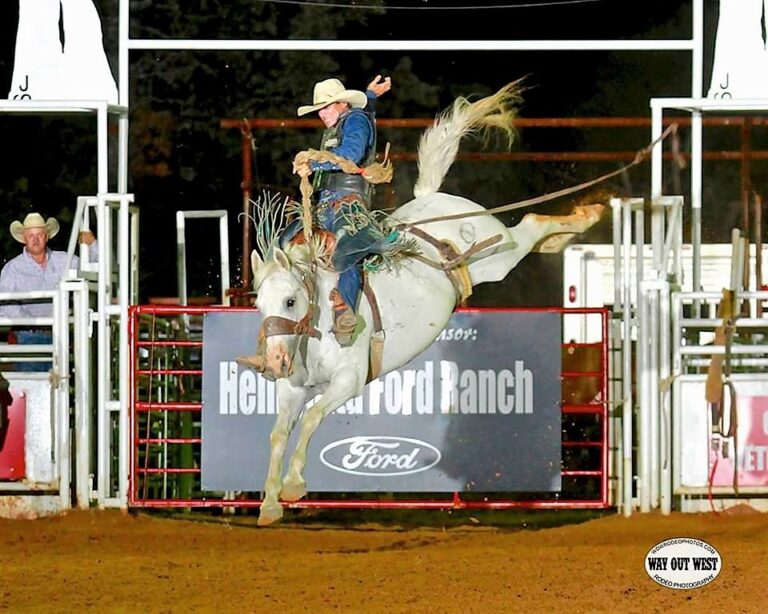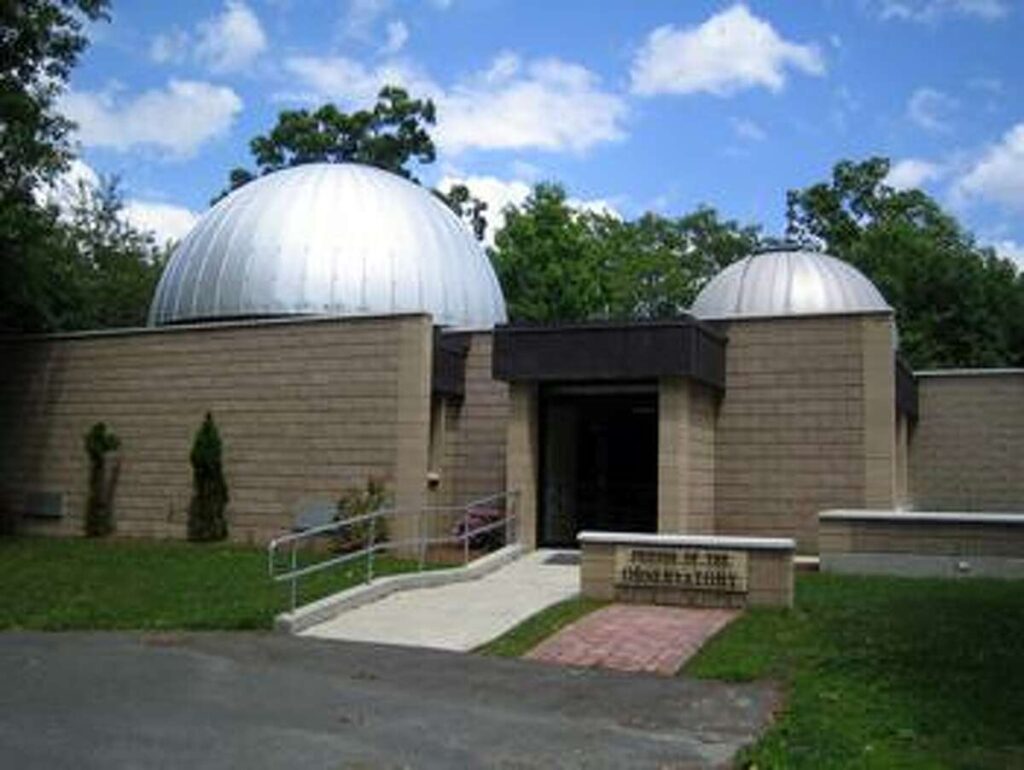Gatherings Activities List Q-S
- Religion and Understanding
- Restaurant Tours
- School Combined Gatherings
- Science, Space and the Stars
- Shopping, Practical Lessons
- State Fairs and Rodeos

Apollo 15 Moon Landing
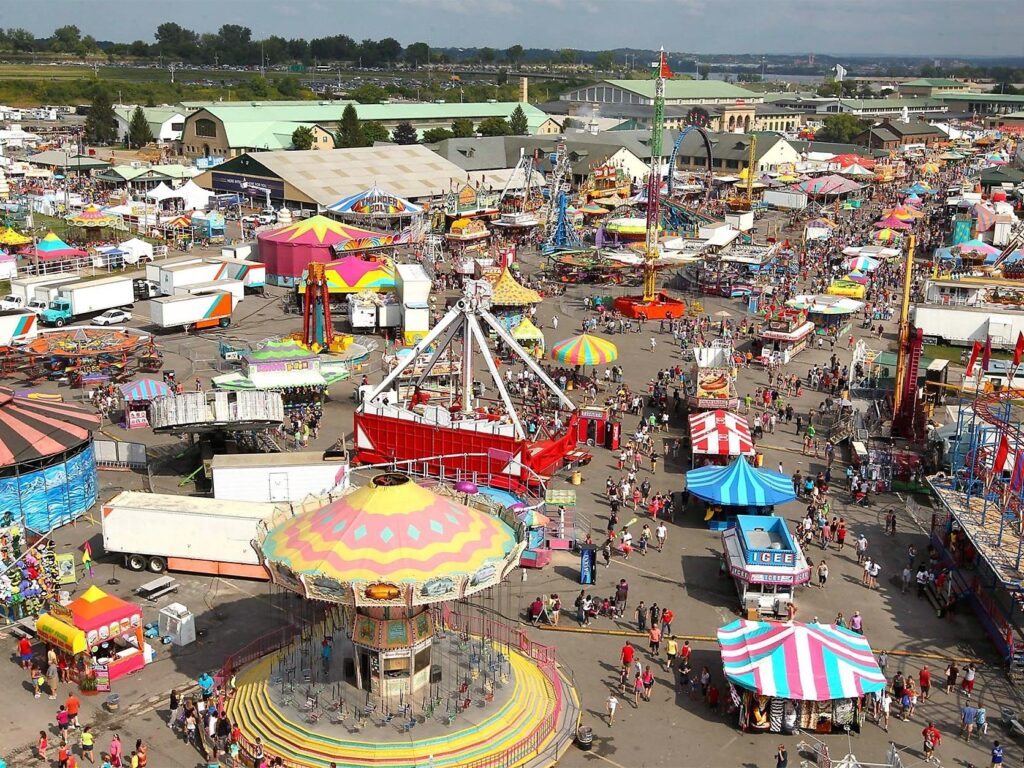
New York State Fair
Religion as an Essential Ingredient to Understanding and Accepting Others:
Religion is such an important aspect in people’s lives (50% of people in America belong to a religious organization) it deserves more of an explanation than just listing it as a suggested activity. On a global scale, 80% of the world’s population are affiliated with at least one religious belief system, which also means that most immigrants (our newest neighbors) are religious in nature.
Understanding other religions is fundamental to citizenship, by Kenneth Primrose:
https://aeon.co/ideas/understanding-other-religions-is-fundamental-to-citizenship
By walking down the street of any major city, you are likely to see more diversity than an 18th-century explorer did in a lifetime. People with very different ideas of how society should function must live together, and there is no idea more divisive than that of religion. Many of the most important moral disagreements break out along religious lines. Indeed, differing religious views on freedom, sexuality and justice threaten social cohesion. That must not be allowed to happen.
One crucial way that people can best learn to live with one another is by increasing their religious literacy. In 1945, the British author C S Lewis said that one will gain greater insight into other belief systems by stepping inside and looking ‘along’ them, rather than looking ‘at’ them from the outside.
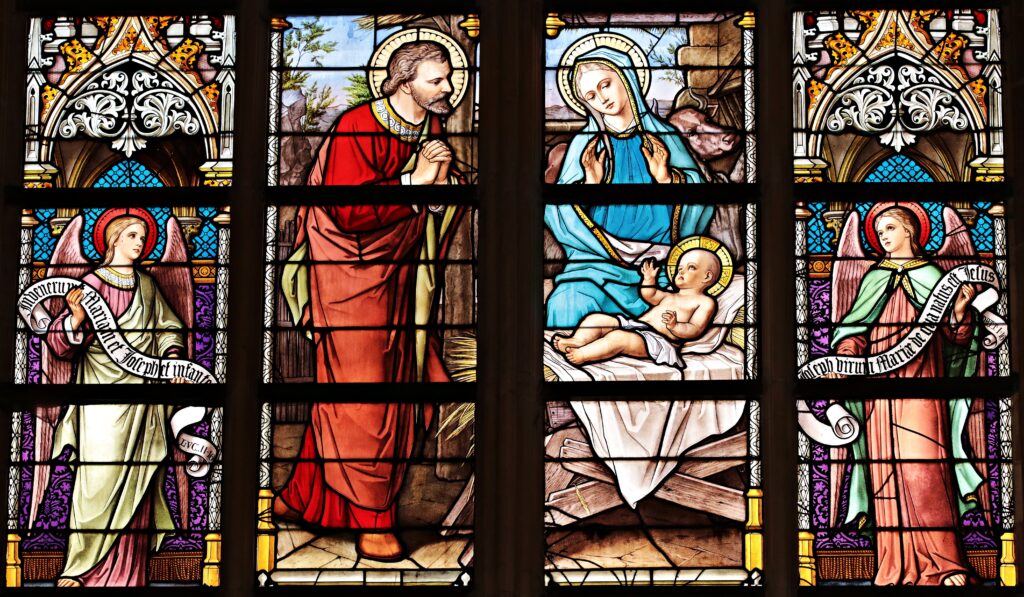

We need to understand that if our program activities are not offered in an open and trusting way, students and parents will become suspicious about the nature of the activity and this can result in chaos and animosity. Being Culturally Sensitive and showing respect towards student’s belief systems is of the utmost importance; this is teaching by example, which is so important when discussing religion. If you plan field trips to houses of worship, be sure students, parents, chaperones, and all other teachers know that the goal is to observe rather than practice in any form of ritual. Avoid putting students into situations where they might feel obligated or pressured to participate.
Remind students that religious freedom is the principle that supports the freedom of any person, in public or private, to practice a religion or belief—and, as well, the freedom to change one’s religion or belief.
The United States Constitution specifically protects religious freedom in its First Amendment. Despite that, some Americans are suspicious of others who have religious beliefs with which they are unfamiliar, our programs offer the opportunity to understand other religions. Our programs can help change that conception.
Sometimes we assume that another belief system is “hostile and even antagonistic” towards ours and that we cannot coexist. However, if we study some of the basic “systems” that religions employ we will see there are many similarities.



The Universality of the Golden Rule in the World Religions
According to Wikipedia, the Golden Rule: The idea dates at least to the early Confucian times (551–479 BCE), according to Rushworth Kidder, who identifies the concept appearing prominently in Buddhism, Islam, Christianity, Hinduism, Judaism, Taoism, Zoroastrianism, and “the rest of the world’s major religions” 143 leaders of the world’s major faiths endorsed the Golden Rule as part of the 1993 “Declaration Toward a Global Ethic”.Christianity All things whatsoever ye would that men should do to you, do ye so to them; for this is the law and the prophets. – Matthew 7:1
Confucianism Do not do to others what you would not like yourself. Then there will be no resentment against you, either in the family or in the state. – Analects 12:2
Buddhism Hurt not others in ways that you yourself would find hurtful. Udana-Varga 5,1
Hinduism This is the sum of duty; do naught onto others what you would not have them do unto you. – Mahabharata 5,1517
Islam No one of you is a believer until he desires for his brother that which he desires for himself. – Sunnah
Judaism What is hateful to you, do not do to your fellowman. This is the entire Law; all the rest is commentary. – Talmud, Shabbat 3id
Taoism Regard your neighbor’s gain as your gain, and your neighbor’s loss as your own loss. – Tai Shang Kan Yin P’ien
Zoroastrianism That nature alone is good which refrains from doing another whatsoever is not good for itself. – Dadisten-I-dinik, 94,5
Religious Diversity Day: In partnership with the school, or other organizations, create an event that brings together leaders in all the various religions to discuss how their beliefs benefit all members of the community. This could be in an auditorium or classroom. Have them point out the part they play in the aid of others, especially those in times of need, perhaps in the form of a panel discussion. Have any religious groups worked together in the past when there was a need in the community? How might we promote this event in a way that includes everyone and does not endorse or support any one religion? The event might include space for each religion to exhibit their spiritual artifacts and food items that can be offered to attendees.
Attend Other Students Religious Services: What better way to expand the understanding of students than to attend a service and see and hear what their beliefs are based upon. Even though some people think religion should not be taught in public schools, the understanding of another’s beliefs is critically important to accepting one’s peers. This and other forms of celebrating traditional holidays of various religions is presenting an experience to the students, not teaching them to understand our cultural differences.
Restaurant Tours
We all eat at them, but how many children have been in the kitchen? All kids are interested in learning how things work, especially how food is prepared. This is a great shared experience. At the slow time of day, it would be fascinating for the students to learn how the food is prepared, and what are the different jobs each worker has. We probably go to restaurants more than any other kind of retailer, except grocery stores. How does the cook keep track of so many orders, coordinate all dishes to finish at the same time and what is Sou Chef anyway? It’s great advertising for the restaurant and visiting an ethnic eatery can be very educational – – – – and yummy.
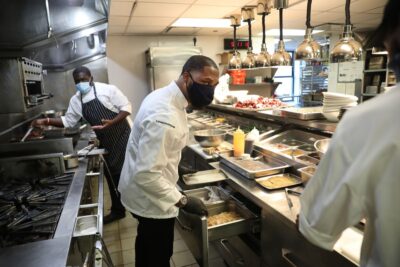
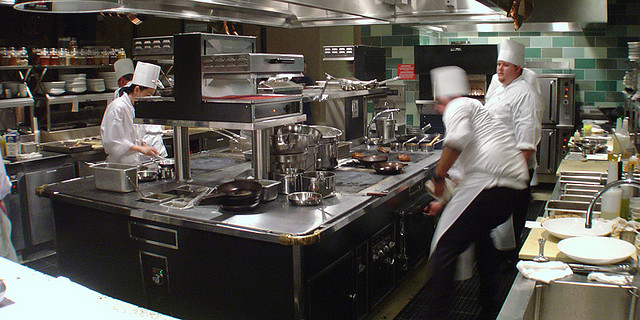
Having students tour a kitchen is in line with the latest “model” of better restaurants: Restaurant chains have taken big steps toward increasing transparency in recent years. From listing calories on menus to providing thorough nutritional information online, these restaurants are ensuring that customers know what the ingredients are in the food they are ordering contains. Some restaurants are starting to take this one step further by inviting customers to tour their kitchens. From Blog.cambro.com; Kitchen Tours: The Next Step In Customer Transparency?
Ideas for Restaurant Tours
https://socalfieldtrips.com/20-restaurant-field-trips-for-kids/
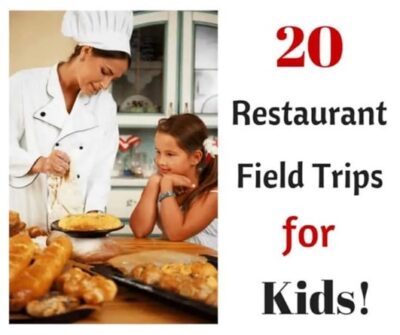
A restaurant field trip can awaken the desire in a child to try new foods, pursue a previously unconsidered career or spark a new interest or passion in cooking. Restaurant field trips not only provide alternative educational opportunities for children, but also benefit the local businesses that they visit.

Applebee’s (Nationwide)
Bring your group to take a “behind the scenes” tour of your local Applebee’s restaurant, learning about different staff positions and duties, food safety, following a recipe and more! Students, teachers and chaperones alike will then enjoy a delicious lunch in the dining room.
School Combined Gatherings:
Plays, Musicals and Concerts, in School: these are put on by the students in one school, and parents and students from another school are invited. When the event takes place, Mix and Match the audience so that students and parents are assembled in a Diverse pattern. If the performance is for one, two or three grades, it might be possible for more than two schools to participate. Arrange for food and beverages to be served afterwards, hosted by the school parents, and help all students and parents mingle. If parents are talking, that sets the tone for the students. No competition, no battle of the bands, just musical offerings.
The Goodman Theatre: an example of what is possible.
Chicago,IL https://www.goodmantheatre.org/engage-learn/for-schools/
The Goodman has several programs they offer to schools in the Chicago area that bring the opportunity for engagement between students of diversity in a wonderful learning experience. Perhaps there is a “Goodman” near your community. One of the programs they offer is a 17-week program, teaching artists work with students and teachers to craft the school’s musical, and train teachers to become directors, music directors, choreographers, and stage managers. The program culminates with a final performance on Goodman’s stage, with each school performing for their classmates, families, and community members. Maybe the Program Manager can arrange for a local theatre group to offer a similar program.
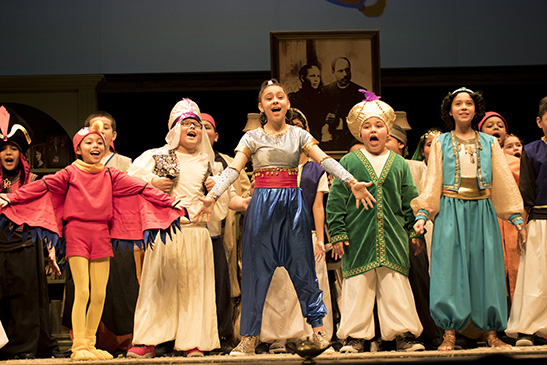
The Goodman Theatre
Invite one school to perform in another, such a singing group – or a whole concert!
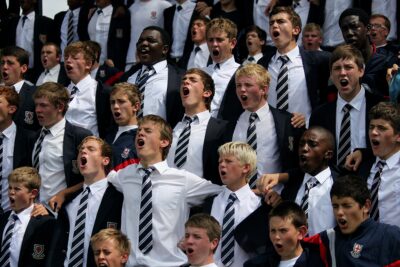
Science Fairs, In-School: Some schools have these on a regular basis and if combined with one or two other schools offer students an opportunity to see how talented Students of a Difference are. This could be a fund raiser, parents should be encouraged to walk around with their children and review each project, with a positive point of view, and to spend a few minutes with other students, teachers, and parents to establish a friendly and positive atmosphere. Children will see that it’s easy to begin a relationship with strangers. Invite multiple schools to do a joint fair.
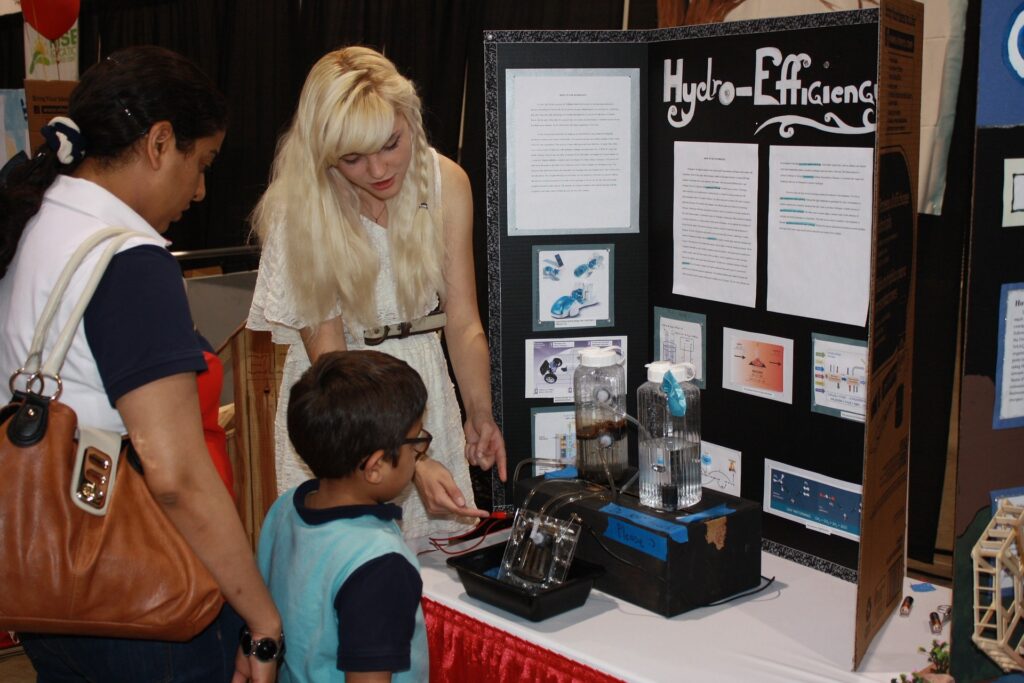
School Publications, Special Combined Editions: Some schools have school newspapers. Several opportunities present themselves for collaboration, such as, students from other schools contributing articles or “reporting” about their local events; a special regional issue, combining newspapers together for one issue every school season (special New School Year and Spring Editions); interviews with politicians that both schools can supply and of course food recipes that families enjoy.

Photo Courtesy of the Graduation Source
Madilyn Palosi, Article Contributor
Here at Viewpoint, we are privileged to have the resources for a school newspaper in which we students get to voice our opinions about what we are passionate https://viewpointpatriot.org/1693/opinion/the-importance-of-a-school-newspaper
Sports In School: Athletics have been part of our educational system from the beginning of public schools, and today there are more opportunities for students, men, and women, to participate in every sport. Studies have found that women, as well as men, benefit physically as well as academically from the daily routine required to be competitive. Sports bring Pride and Respect to students, and athletes are more open to friendships with Students-of-a-Difference when they root for the same team. Coaches are already well versed in how to connect teammates with each other, they would make wonderful Team Supervisors – and great members of a committee.
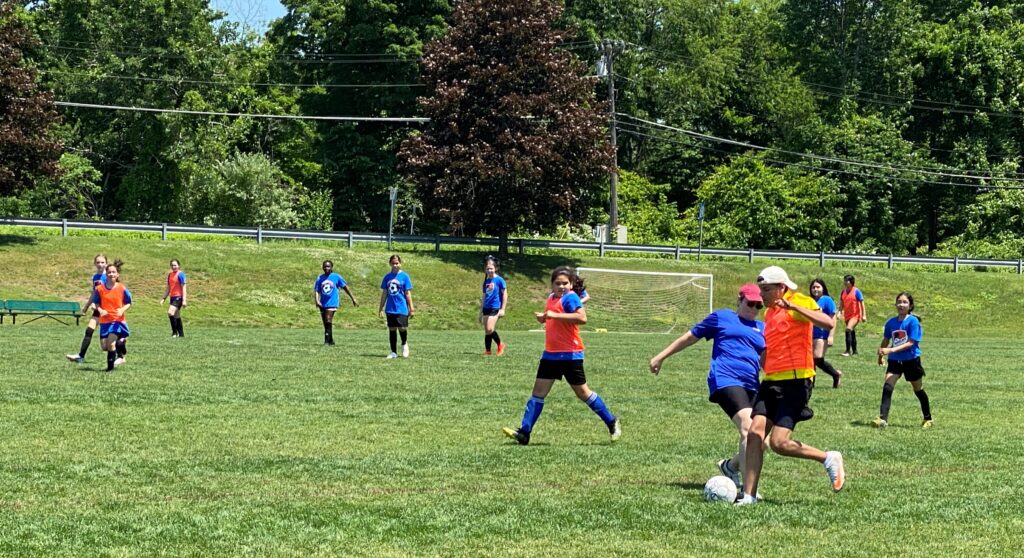
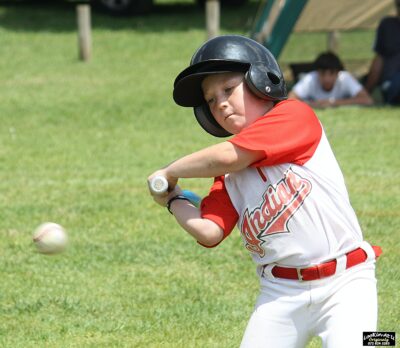
Combine Practice with other Schools: Some schools have a dominant racial profile, which makes inter-racial activities hard to manage. But, if two schools, with differing profiles combine their practice workouts, we can offer a better Mix-and-Match activity. Students interacting with each other is combined practice, working together in the other school’s fields, will offer new thoughts about relationships. They will learn about different school environments and what their facilities are like.
Coaches should talk to their players about the benefits from joint practice, and plan beforehand what the practice will entail, who will oversee each segment and what is the best way to attain the most diversity in the field. Coaches should coach the other team during drill segments. Students seeing coaches work together sets the tone for how they interact. Players from one school play a position on the other team for practice because the more students are put together the better the experience will be. During practice coaches need to be alert when the students drift away from mingling and be mindful of the tendency for athletes to be competitive. This is not one school pitted against another, it is a measured program to bring out the friendly side of sports.
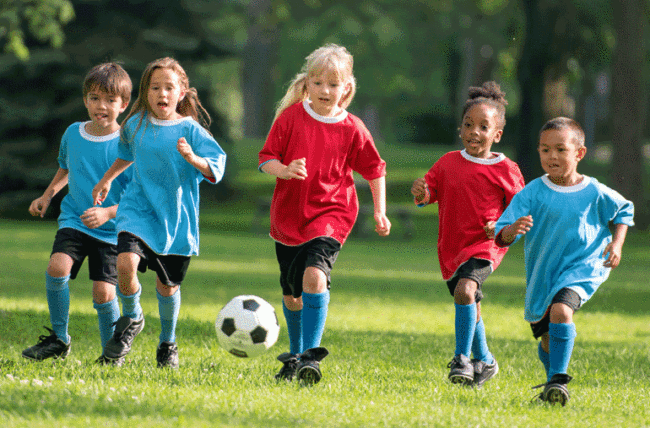
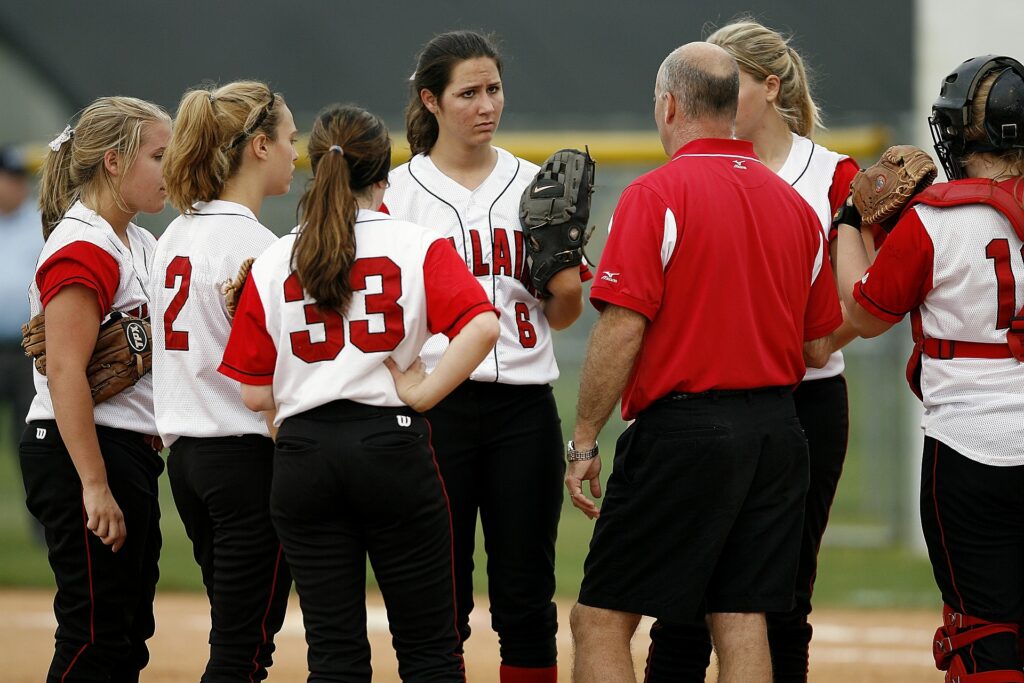

If making bubbles was a 5th grade sport she would be a winner!
Football by nature is very physical, so it may not be the best choice to a full scrimmage. Avoid opportunities for those students who would look at this as a time to prove which school is the best. After practice each coach can have a conversation with their players and find out what they think. If things do not go as well as hoped for, the committee members who attended will have learned what changes can be made for future combined practices that will render better results.
Science, Space and the Stars:
Why add science to our activities? We offer science in a different way than in school. There are no grades, no expectations, or tests. A discussion afterwards is just that – – an open discussion, no pressure. Gatherings take place outside of the classroom, so it’s different and presents the students with a different feeling. Science is part of our daily lives. Science touches everything we do, from our cell phones to cooking and riding the bus to school. We offer students the opportunity to see science in action. Interacting with nature in our park activities, to cooking classes where children can learn the art of food preparation. A visit to a planetarium is an opportunity to see the universe in a unique way. This can be followed up with a nighttime activity of star gazing, for older students. In Danbury, Connecticut, Western Connecticut State University has a small planetarium that is open for schools and scout groups. Find out if there is such a wonderful place in your community that offers similar programs.
The WCSU planetarium, located in the Westside Observatory building, seats 40 people; its Spitz A3p star projector, special effects projectors and video projection system are used for teaching and presenting science programs to school and scout groups. Public nights to view stars and planets take place (weather permitting) on a regular schedule. The Westside Observatory, located atop a five-acre hill on Western’s Westside campus, houses a 20-inch computer-controlled Ritchey-Chrétien reflector.
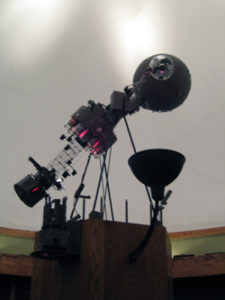
Shopping, Practical Lessons:
Why? Why not? Buying is an art that is passed down from generation to generation, and our members can offer lessons on how to shop to get your monies worth. In a supermarket, what makes one apple a better buy than another or which snack is the healthiest. Buying clothes, which shirt is the best quality – based upon the stitching and material. Which computer is the best value, how much do you need to spend, $300 or $500? How do you research which brand is the best value? Show them how to find the information they need on line. Which sites are best and how do you tell which review is genuine?
Sometimes the retailer might give a tour of the operation. How do they keep the fresh fruit fresh and the frozen food frozen. Take-home meals are a fast growing segment of the retail food market, students might be interested to learn how stores prepare each meal. How do they determine how many meals to prepare, and what do they do with the unsold food?
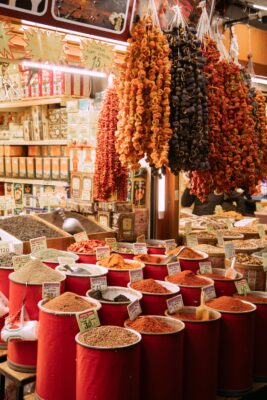

I can never figure out which pinapple to buy, can you?
Ethnic food shopping: Depending upon where you live, there are many different “kinds” of retail food markets, for example, Korean, Spanish, Brazilian and Indian. Students, and some parents might enjoy being given a tour and learn about what each item is, and what dish it is used in. Store owners would be happy for more customers, and glad to see that children are being taught about their cuisine.
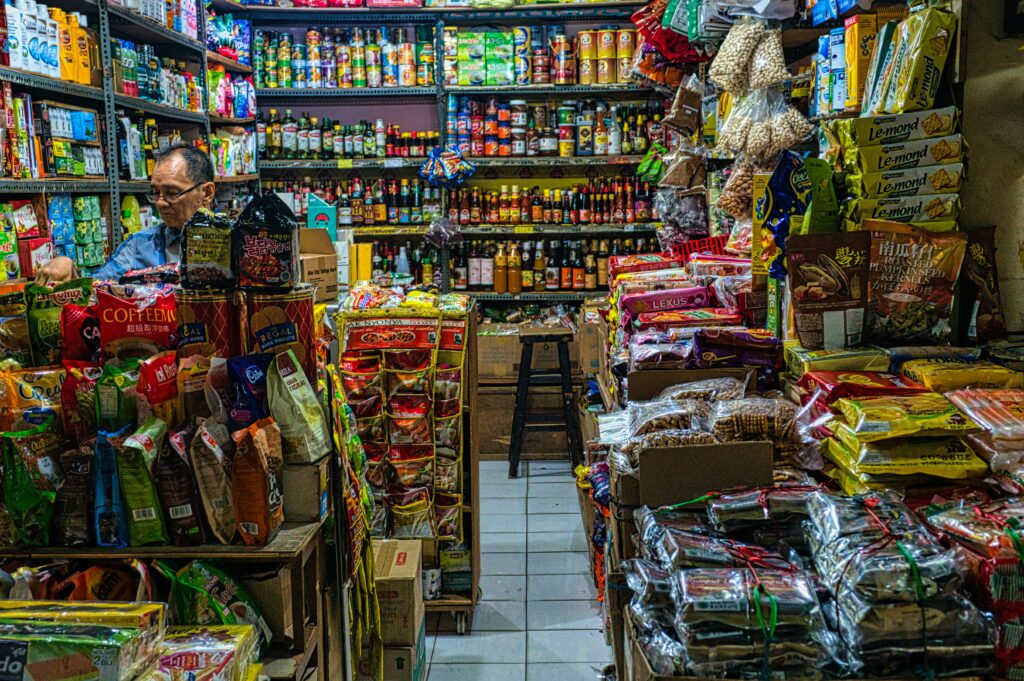

One of the largest ethnic food markets is Hmart. Started in Woodside, NY in 1982, they now have over 100 stores throughout the United States. With growing interest in non-traditional foods, students will want to learn more and, perhaps a cooking class can be arranged.

H Mart Cedar Park, Austin, TX
State Fairs and Rodeos
Parts of our great country offer these “opportunities” for our Programs. This is American Culture at the most basic level, showcasing our farming and western way of life. Supervising a group in such an active environment will take a little more effort than in other activities, but the joy and fun our students will have will make it all worthwhile. Make sure to Mix-and-Match and lead the conversation with questions about each event, let each student show their knowledge. People love to share, and this is a great way for them to learn about each other. And, it’s a great place for parents, and the entire family, to spend time together.

Ohio State Fair

New York State Fair
State Fairs and Rodeos have entrance fees, the food and rides will more to the cost. Fund raising becomes very important and needs to be part of the plan, which means a long range plan will be needed. We can help at National, but the effort needs to be local.
State have changed over the years, they are no longer animals and fried food. They got their start for ranchers and farmers to exhibit their livestock and produce, but today music, good food, crafts and amusement rides share center stage. It’s a great way for families to spend time together. This activity could include several families, which is a great way for the parents to get to know each other – – in a fun and interesting activity!

Fuzzy ducklings at the fair — Photo courtesy of iStock / ideabug
From USA: 10 reasons why you should go to the state fair
https://www.10best.com/interests/festivals-events/10-reasons-why-you-should-go-to-the-state-fair/
Farm animals’ headline at state fairs, whether they’re being shown for a 4-H contest or housed in educational exhibits. Those of us who haven’t had opportunities to visit farms or ranches will enjoy the experience of interacting with critters like cows, pigs, chickens, rabbits, goats, sheep and more. You might even get to pet some adorable baby animals!
Cook Offs: Among the many contests occurring at state fairs are cook-offs. You’ll find everything from the more conventional baking and chili competitions to the more bizarre like Goo Goo Clusters or Spam. May not sound like your cup of tea, but it’s the experience that counts!
Annual state fairs have taken place in the United States since the 1800s, so many have long and storied histories that are worth exploring. It’s amazing to observe how state fair culture has changed over the years.
Musical performances have long been a tradition at state fairs, but it seems that the concerts get bigger and better with each passing year. Lineups are jam-packed with weeks of shows that highlight big names as well as up-and-coming musicians.
Food is a huge draw for fair-goers, and if you’re lucky, you might even be able to take home some recipes. Many events across the country have cooking demonstrations where you can learn how to make select dishes. And some cook-off winners are willing to share their recipes, allowing you to create award-winning items at home.
Of course, the rides are a huge attraction at state fairs. There’s always something for everyone, whether you seek thrills on the Zipper, twisting-and-turning amusement on the Scrambler, or low-octane fun on a Ferris wheel. Something for every age.
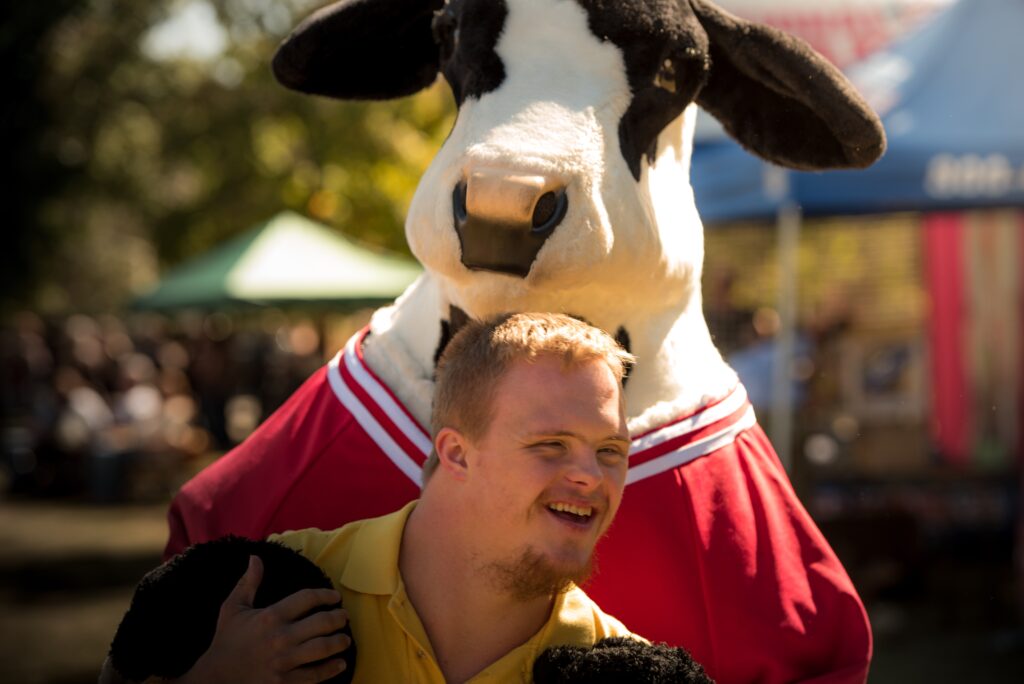
Meet people and make new friends

No clowning around here – this is serious business
Rodeo represents the courage, heritage, and heart of our American West
It’s not just bull rides that you will see, there are several competitive events, from the bull riding to barrel racing, each is unique and thrilling. Each day and night brings in a variety of events, so there is never a dull moment. These are dangerous sports, with athletes from around the world. And on the safer side, there is something for everyone; mechanical bull riding, a petting zoo, rodeo clowns and even amateur events. For a Gatherings activity it can’t be beat! But, ask with State Fairs, they can be costly, so plan ahead because you might need a fun-raiser or two.
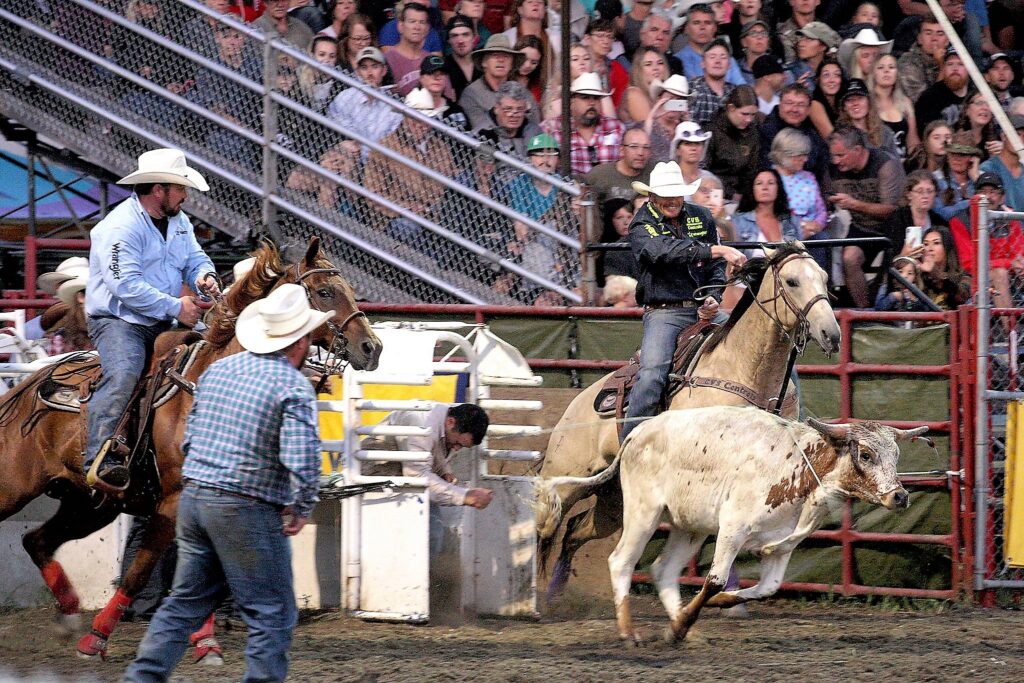
Cattle roping is one major sport that involves great coordination with horse and rider.
